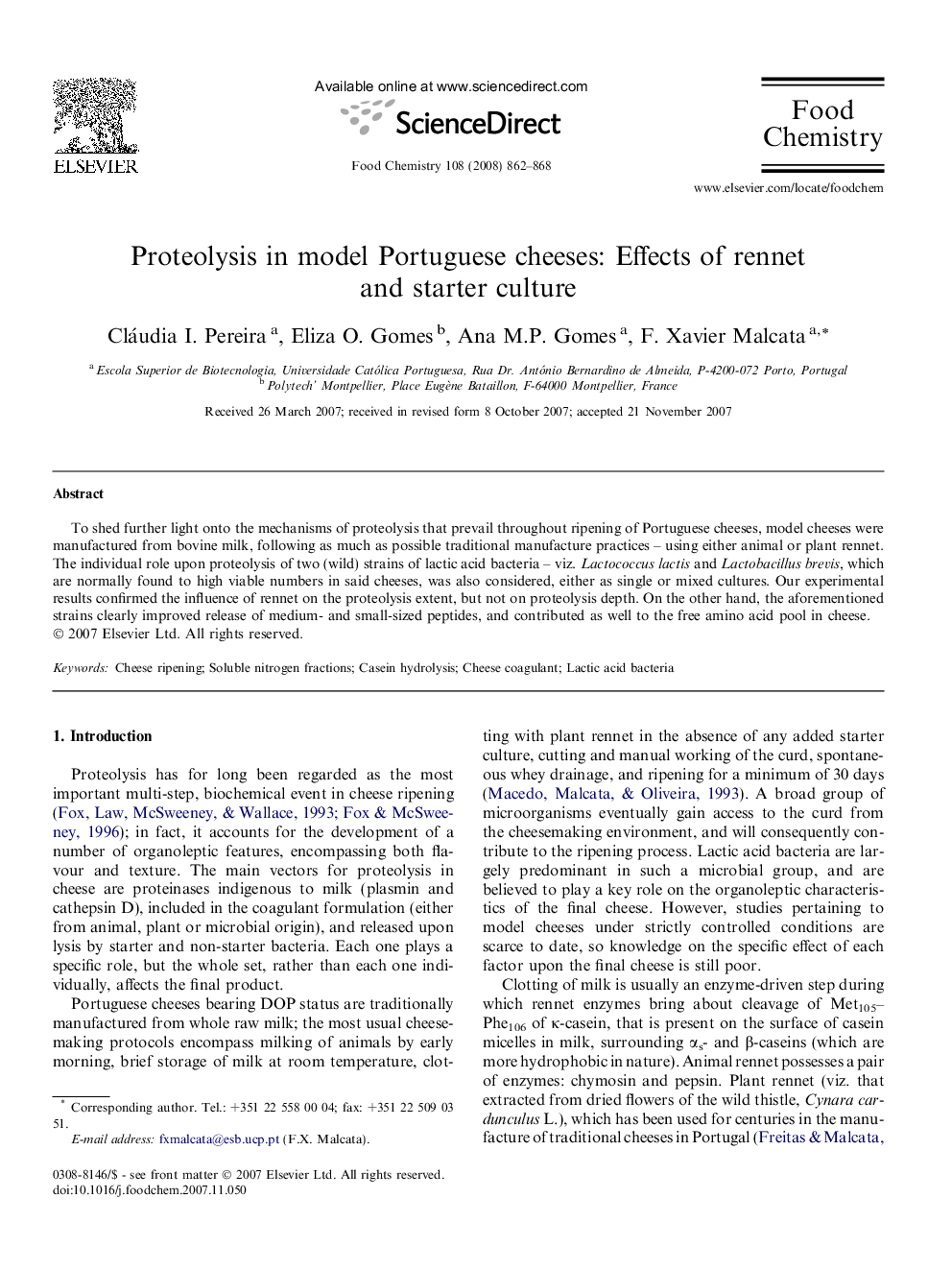| Article ID | Journal | Published Year | Pages | File Type |
|---|---|---|---|---|
| 1187308 | Food Chemistry | 2008 | 7 Pages |
To shed further light onto the mechanisms of proteolysis that prevail throughout ripening of Portuguese cheeses, model cheeses were manufactured from bovine milk, following as much as possible traditional manufacture practices – using either animal or plant rennet. The individual role upon proteolysis of two (wild) strains of lactic acid bacteria – viz. Lactococcus lactis and Lactobacillus brevis, which are normally found to high viable numbers in said cheeses, was also considered, either as single or mixed cultures. Our experimental results confirmed the influence of rennet on the proteolysis extent, but not on proteolysis depth. On the other hand, the aforementioned strains clearly improved release of medium- and small-sized peptides, and contributed as well to the free amino acid pool in cheese.
